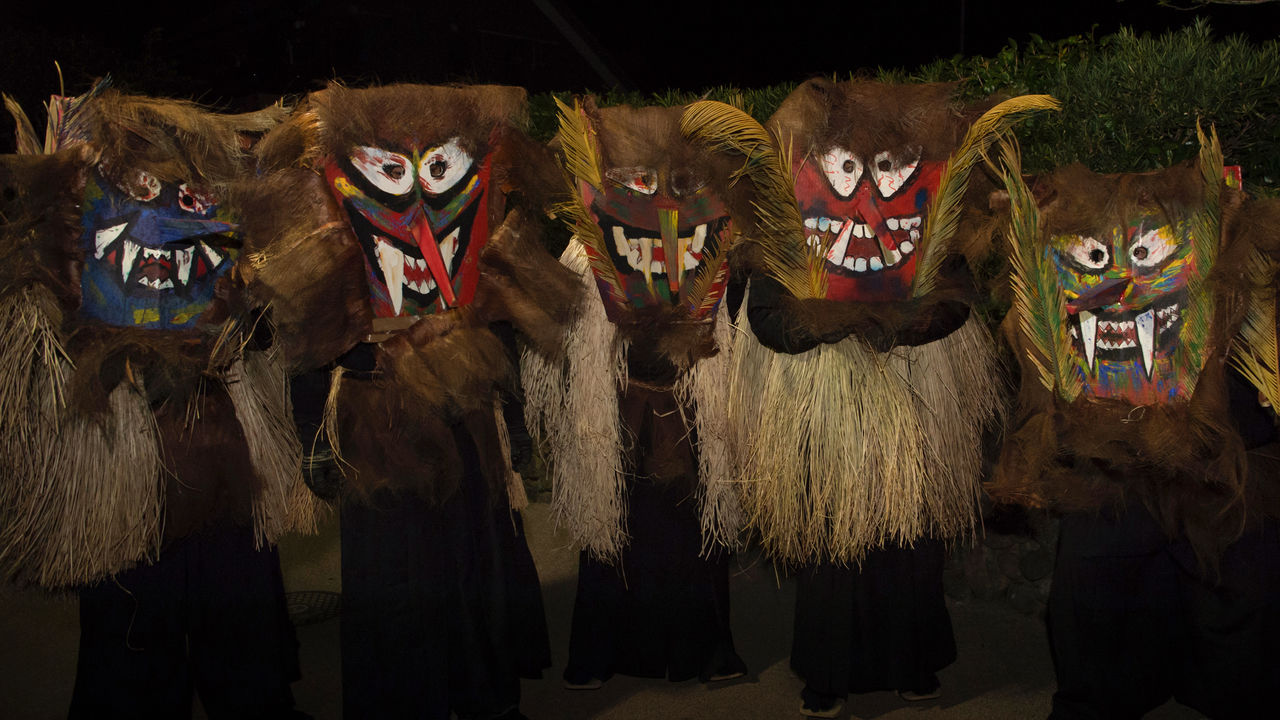
“Toshidon”: The Visiting Spirits of Koshikijima, Kagoshima
Guideto Japan
Culture- English
- 日本語
- 简体字
- 繁體字
- Français
- Español
- العربية
- Русский
Global Recognition for Local Fiends
“Hey! Open up! Is the kid at home? Come and open these shōji screens!”
On New Year’s Eve, raihōshin, deities with long noses and sharp fangs, go visiting households where there are children. These are the toshidon, whose community tours are an annual tradition of the Koshikijima islands, part of Kagoshima Prefecture.
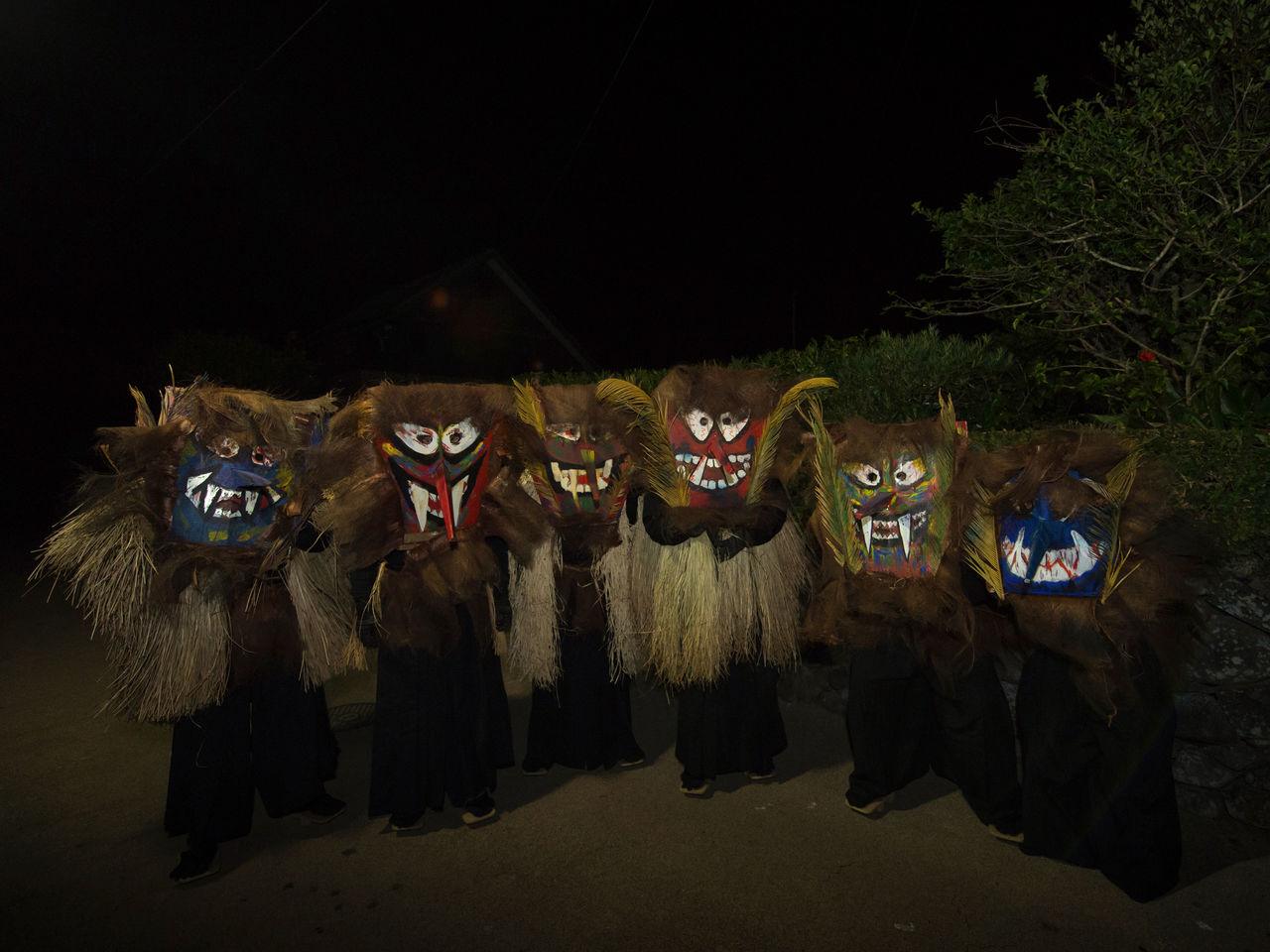
Toshidon wear masks of various colors, charming as well as scary.
The toshidon of Koshikijima were designated a Japanese national important intangible folk-culture asset in 1977, and inscribed on the UNESCO list of the Intangible Cultural Heritage of Humanity in 2009. With the addition in November 2018 of another nine such observances, including the famed namahage of Oga, Akita Prefecture, these ritual visits at the turn of the year are attracting renewed interest.
Koshikijima, a part of the city of Satsumasendai in Kagoshima Prefecture, consists of three islets in the East China Sea, located some 25 kilometers west of Kyūshū proper. The northernmost of these islets is Kami Koshikijhima, followed by Naka Koshikijima and Shimo Koshikijima. It is on Shimo Koshikijima, the southernmost islet of the group, that the toshidon tradition has been maintained. While the origin and history of the expression are uncertain, the word is made up of toshi, referring to toshigami, Shintō spirits that go from house to house during the New Year, and don, the equivalent to the name suffix –san in Kagoshima dialect.

Sunset on New Year’s Eve over Teuchi Bay, on the southern coast of Shimo Koshikijima.
Praising the Good, Warning Against the Bad
Among other things, toshidon are said to descend from the heavens riding headless horses to land on high mountaintops or large stones. At night on New Year’s Eve, young men of the island put on toshidon costumes in places where they will not be seen doing so by children. Then, accompanied by servants called tsukishi, they visit houses where young children live.
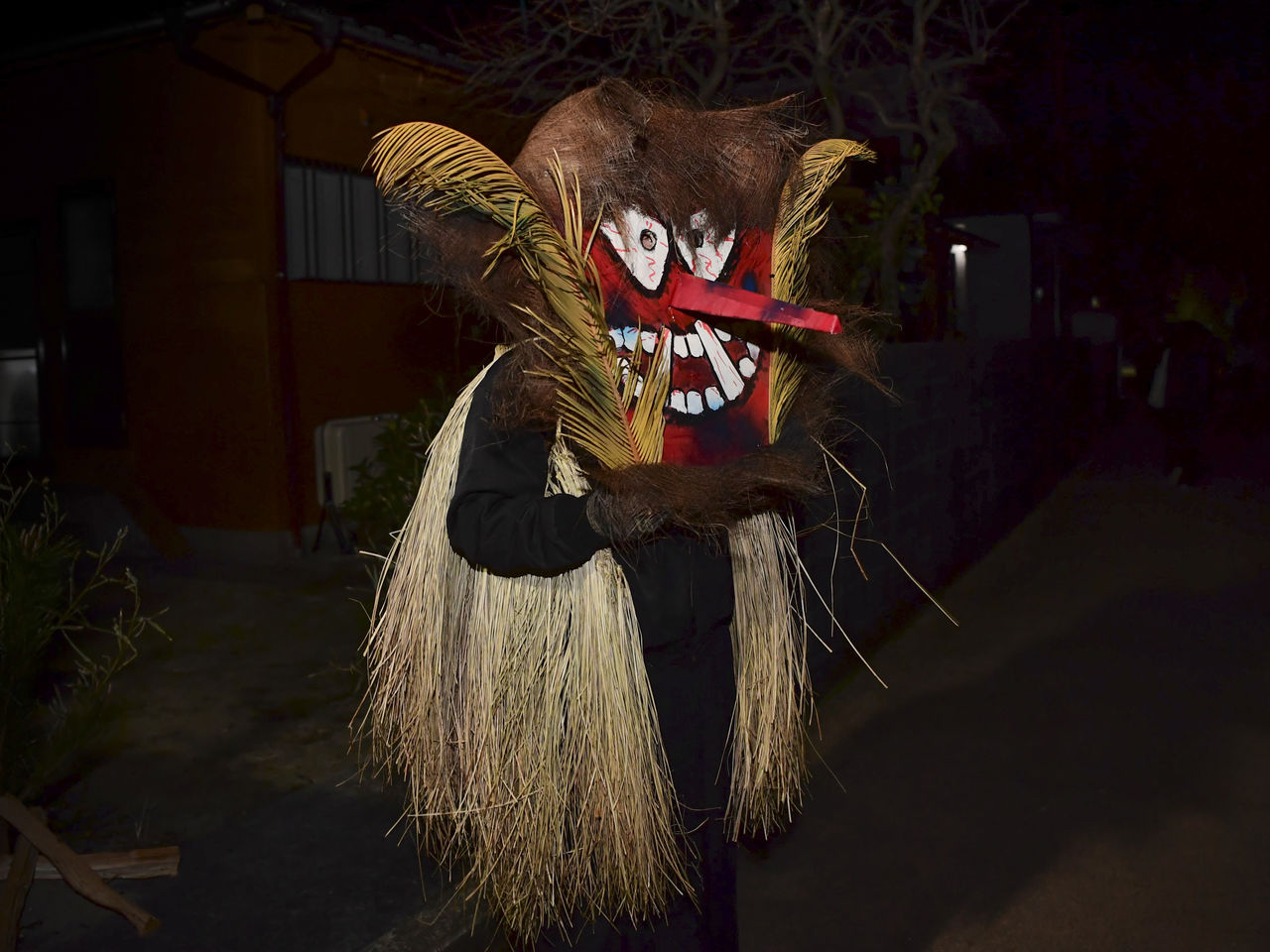
A toshidon moves through the darkness toward houses with children. The hair is made of Chinese windmill palm husks, and the sides of the face mask are adorned with a mane made from sago palm leaves.
Though specific appearances vary from one place to the next, the participants all wear oni devil masks made of such materials as Chinese windmill palm husks, sago palm leaves, and paper, and cover their bodies with capes or rain ponchos made of straw. Then they enter a given house with a shout of “Hey! Is so-and-so home?! Come and open the shōji screens!”
In the community of Teuchi Fumoto, in the southern part of the island, the ritual is conducted in the traditional way, in dimmed rooms with only one small light switched on. To the locals, toshidon are revered entities, and the children are on their best behavior, meeting the spirits on their knees and taking care to speak politely to them.
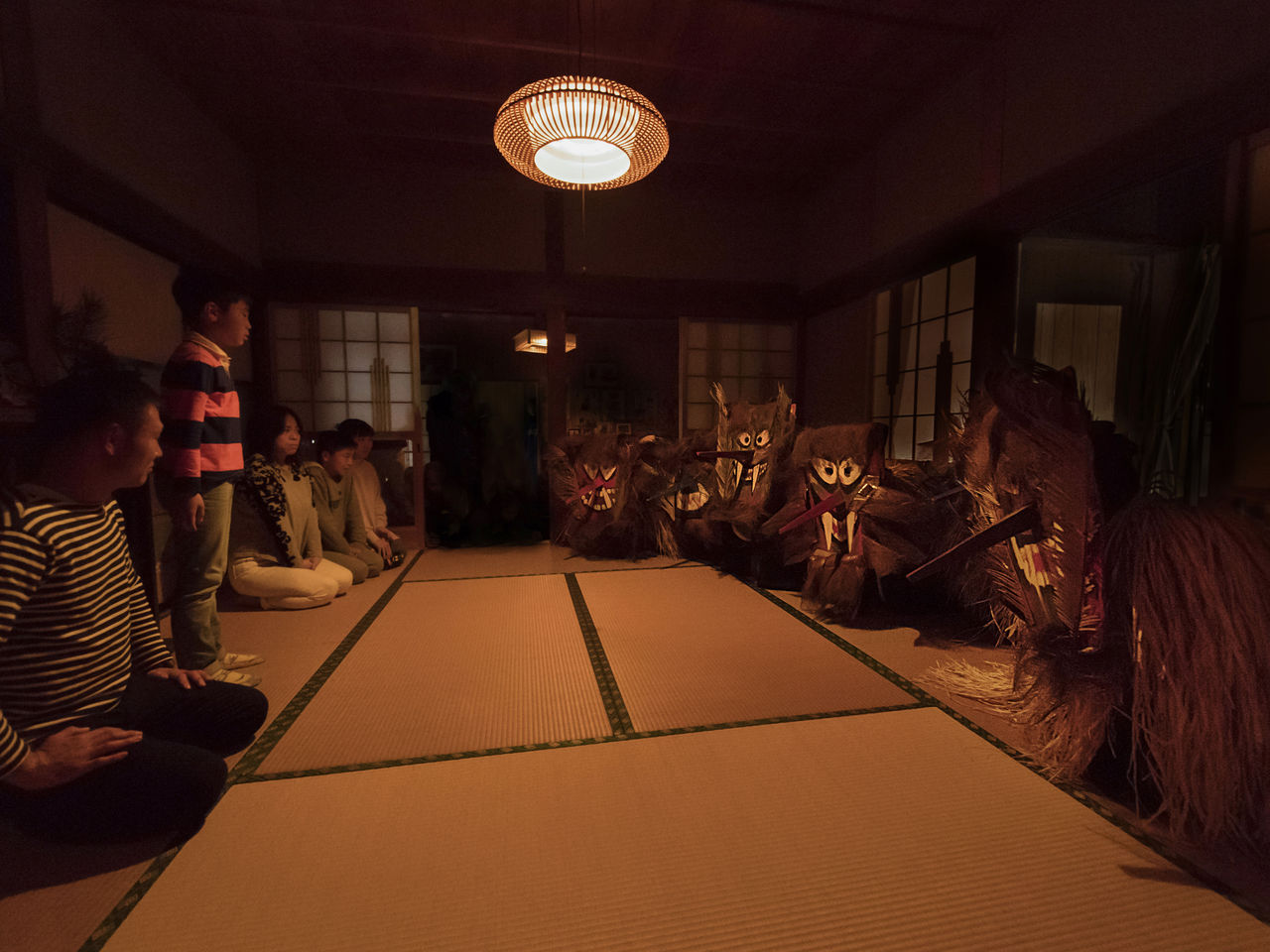
In this dimly lit room, a boy stands at attention as he listens to the toshidon speak.
Having seen all from the heavens, the toshidon speak with the children about their behavior over the past year, warning them about bad things they have done and praising them for the good. They also make the children sing and dance and make New Year’s resolutions. Lastly, they take toshimochi, a type of mochi rice cake given as a reward, and place them on the backs of the children, who get on their hands and knees for the purpose. While many children cry in fright, upon observing the entire ritual one has a sense of a gentle desire to see these children grow strong and upright.
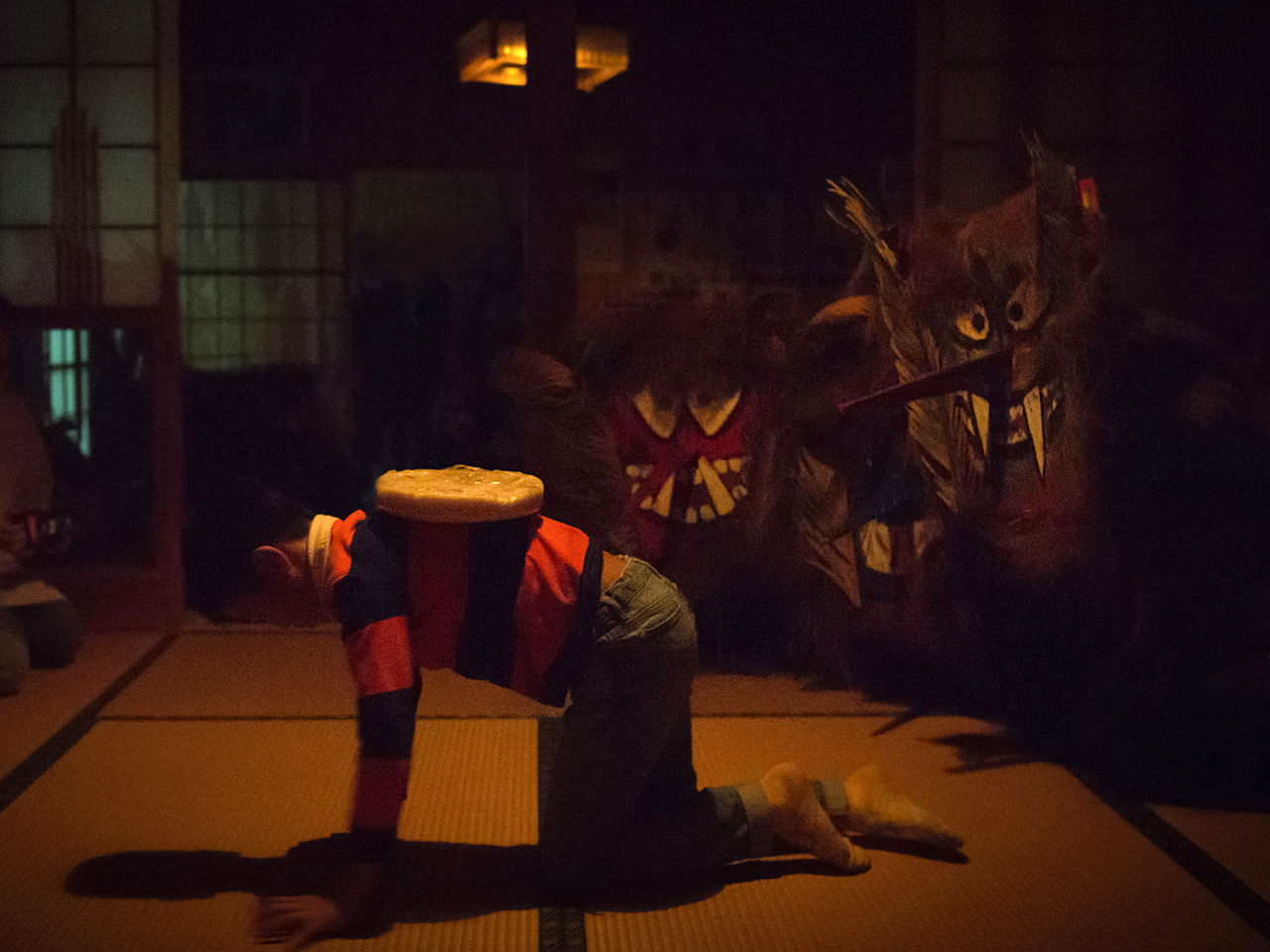
The final act involves placing toshimochi rice cakes on children’s backs.
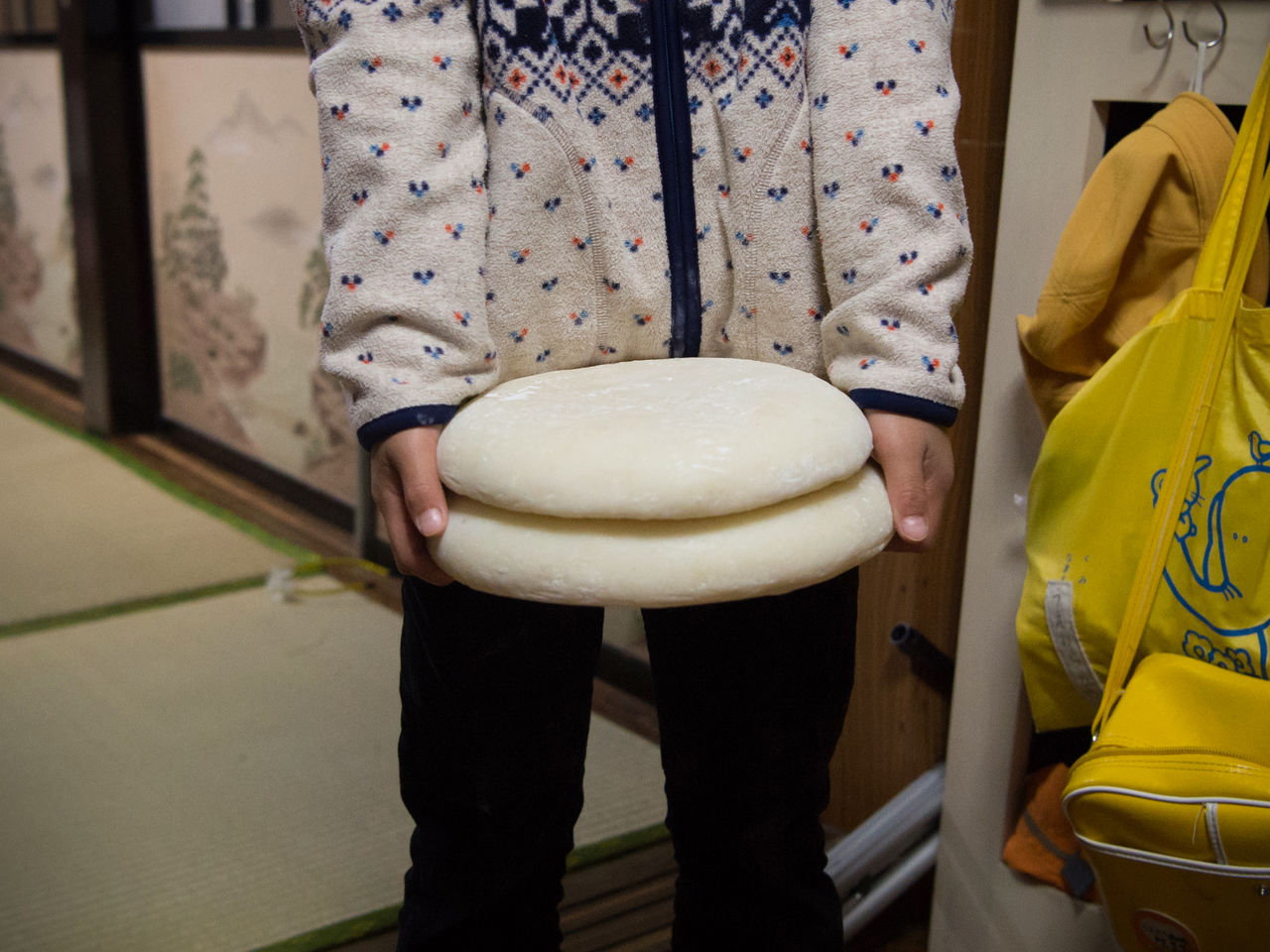
Bulky as well as heavy, toshimochi rice cakes are believed to be the basis of otoshidama New Year’s gifts to children.
Handing Down the Tradition
These children who are annually alternately praised and scolded by the toshidon themselves become tsukishi for the toshidon and make the rounds as they grow older. As they learn the steps and actions of the observance, they take over as toshidon when they become adults, inheriting the ritual in keeping for future generations.
There are six toshidon preservation societies on Shimo Koshikijima, and it is said that in earlier times, they would visit nearly 20 households in each hamlet in a night. With fewer children being born on the island, however, only three communities held toshidon visits as of late 2018, and only four residences were visited by the Teuchi Fumoto toshidon preservation society. It is hoped that this traditional observance will be maintained and passed on still.
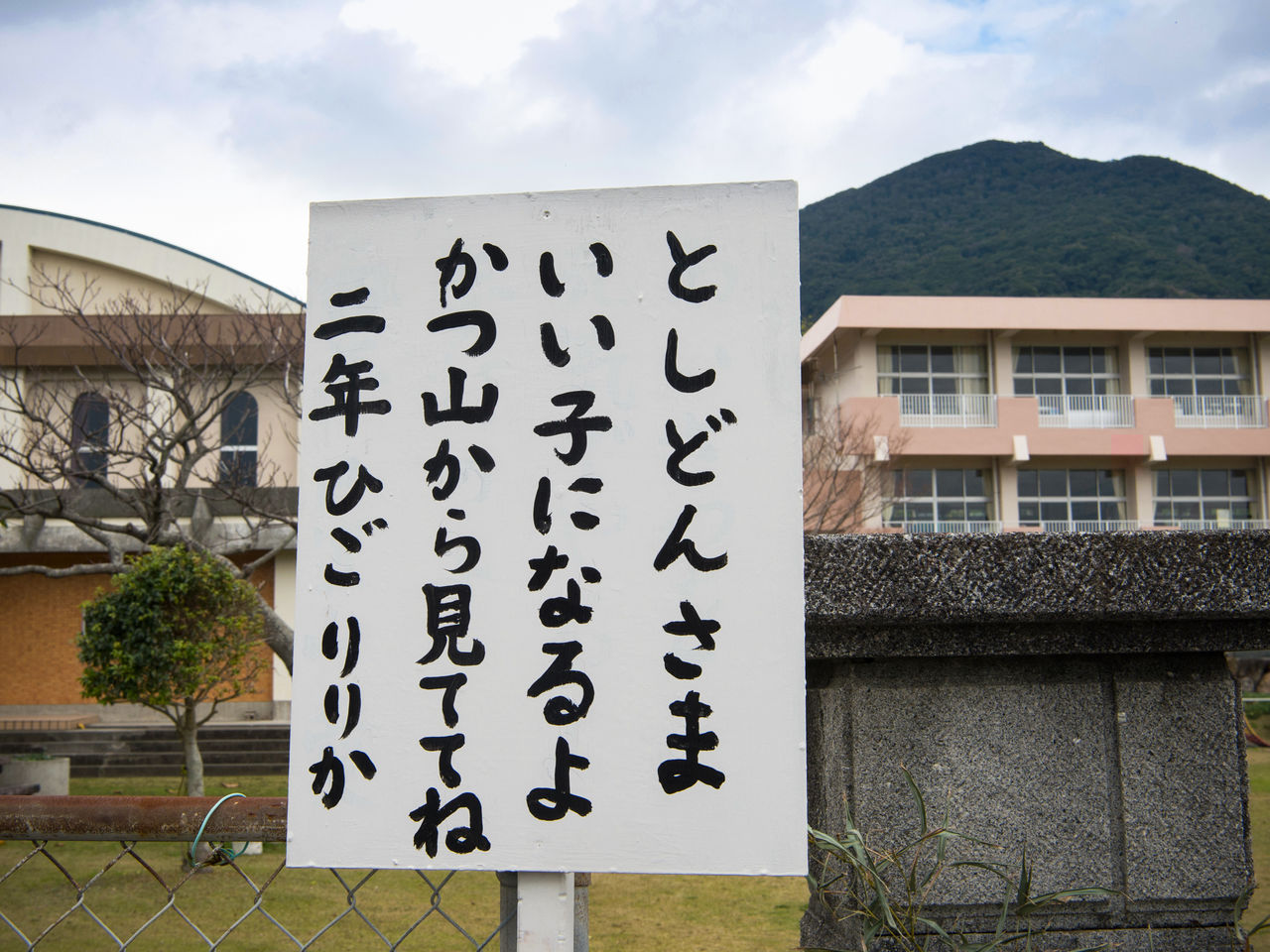
This sign posted in front of Teuchi Elementary School is a second grader’s pledge: “I’ll be good, so watch over me.” The toshidon are vital to the growth of the island’s children as members of their community.
(Originally published in Japanese. Photos and text by Kuroiwa Masakazu of 96Box.)